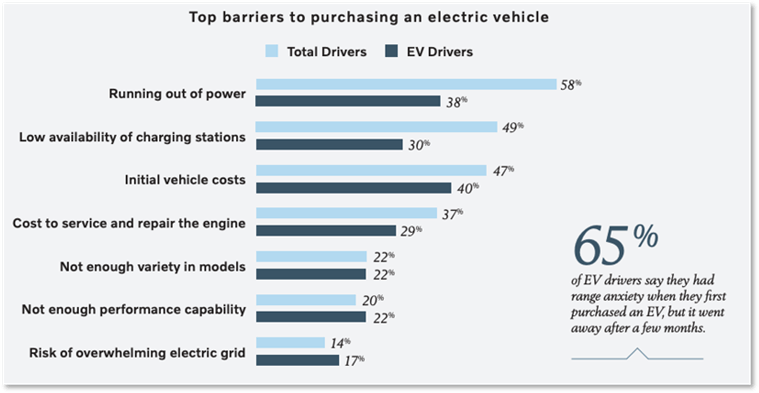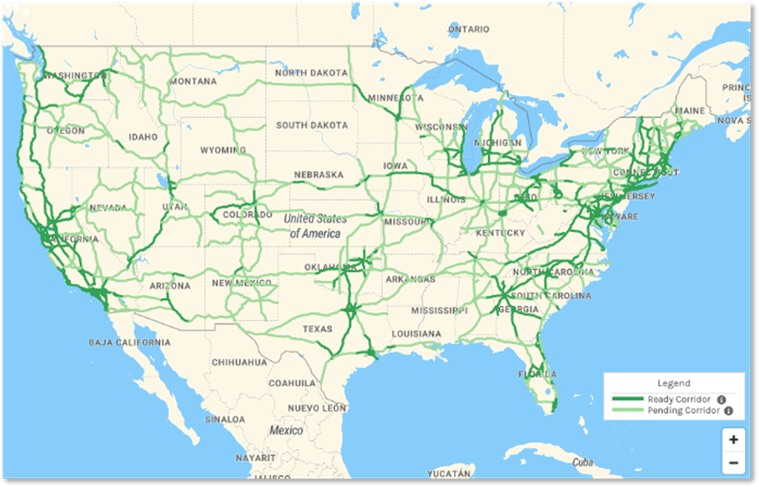Transitioning to Electric Vehicles
Our recent webinar, The Future of Electrified Transportation presented by Jeff Doyle, Tim Sorenson and Matthew Goss, discusses transportation electrification from policy, transit, and energy perspectives. Here is an overview of what they covered:
Electrification and Policy
Reducing oil dependency and electrifying transportation will vastly improve emissions, but to make real impact, mass adoption of electric vehicles is necessary. Fortunately, there are many major initiatives happening concurrently to accelerate these efforts. Most, if not all, major automakers are increasing electric vehicle (EV) production, with many pledging to produce only EV within the next 10-15 years. In addition, states and cities are implementing meaningful policies and offering incentives to encourage electrification, and the recently signed Bipartisan Infrastructure Law outlines key funding and investment plans.
But how do we actually transition to full electric drive and how do agencies implement zero emission vehicle transitions? Undoubtedly, the transition to electric drive vehicles creates both challenges and opportunities for public agencies and the industry. As agencies consider their next steps, they must first understand electric vehicle basics, market drivers, policy, and adoption rates, as well as opportunities and risks. According to the Alliance for Automotive Innovation, the western U.S. is currently leading the nation in EV registrations, with half of EV sales concentrated in California. While we still have a long way to go, we are positioned well for moving forward.
Comparing where we were in 2015 (after the initial push by the Obama administration 2008), major automakers have stated that achieving 40-50 percent new vehicle market share for EVs by 2030 is feasible. Following the new Federal Sustainability Plan, agencies are focusing on converting their own public fleets, as a strong push into electrification.

Agency Planning and Implementation for Zero Emission Transitions
Implementing a solid transition plan begins with a basic understanding of electric vehicles and must address needs at the power source and where to charge (power distribution), before developing a full-scale plan. Access to charging infrastructure begins with utilities and these providers are in a unique position to fill critical gaps between EV adoption and the implementation of large-scale charging stations. Transit agencies, in particular, have made great strides in electrification and the new provisions outlined in the BIL will only increase these efforts. The new statute defines six specific requirements for transit grant applications related to zero-emission vehicles. At the basic level, each plan must:
- Demonstrate a long-term fleet management plan
- Address the availability of current and future resources to meet transition and implementation costs
- Consider policy and legislation impacting relevant technologies include an evaluation of existing and future facilities and their relationship to the technology transition
- Describe the utility or alternative fuel provider partnership
- Examine the impact of the transition on the applicant's current workforce by identifying skill gaps, training needs, and retraining needs of the existing workers
To develop an implementable plan and make sound decisions, a strong multimodal team is vital and must be part of the initial efforts. This team should include transportation, environmental and sustainability, permitting, civil, electrical and power, architectural, mechanical (fire protection), operations and maintenance.
Whether a transit agency or other government agency, it’s a good idea to begin framing a transition plan with the end in mind – what do you want to achieve and what are your overall goals? Other areas that must be looked at include existing and future fleet/facilities, technology needs, grid assessment, equity, costs, resiliency and sustainability, workforce training, and fleet energy needs.
Typical challenges often involve charging times, compatibility and grid capacity, infrastructure availability, range anxiety and charging behaviors, renewable energy options, and retrofitting existing infrastructure.
Charging Infrastructure Considerations
Adding charging infrastructure is not as simple as choosing a location and dropping in charging stations. Other factors need to be considered. For example: will there be redundant/alternate sources of power? If vehicles are utilized for critical activities, and utility power becomes unavailable, should emergency/standby power be required to keep EVs charged and ready to go? Are there climate-related events such as flooding that may pose a threat? Should chargers be standalone devices, or should they be networked and communicate with each other? Would the charging stations impede traffic flow or accessibility? What charging levels will be deployed? The answers to many of these questions will depend on the location, the community, and the infrastructure already in use.
Lastly, it’s important to examine how facilities need to be scaled up to support EV and understand the hidden costs. Zero Energy Building energy accounting, including vehicle charging energy inside the building, would assess energy used for heating, cooling, ventilation, domestic hot water, indoor and outdoor lighting, plug loads, and process energy.
Addressing the Big Question: Funding and Investment
The Bipartisan Infrastructure Law opened the door for converting electrification talk into reality. With broad-based and unprecedented funding opportunities such as the $7.5 billion for a national charging network and competitive programs such as rural charging and increasing EV charging access in disadvantaged communities, we are poised to see significant acceleration in transportation electrification.

The National Electric Vehicle Infrastructure (NEVI) Formula Program is a guaranteed distribution from the federal government to all states through their transportation departments. The formula program will provide a total of $5 billion over 5 years. This funding is to be used for EV charging infrastructure, with the program’s first priority of completing a nationwide network of charging stations along federally approved Alternative Fuels Corridors (AFC). AFCs are formal designations made by the Federal Highway Administration (FHWA) on routes, primarily interstate corridors, based on information provided by the states. Corridors are first proposed by the states, and after reviewing to determine whether the underlying conditions are met, FHWA will formally approve and designate the corridor. Nominations for new Alternative Fuels Corridors are currently being solicited, and many states already have FHWA AFC-designated corridors.

Other potential funding categories for EV-related projects include the Carbon Reduction Program, truck emissions at ports, state energy grants, deployment technology for enhanced grid flexibility, clean school bus program, and competitive low or no emission grants. Though there are many additional considerations, policies, and infrastructure requirements that will need to be addressed before deploying any EV plan, covering these basics provides the foundation for electrification. The Transportation Electrification webinar addresses the topics mentioned above among additional insights regarding the shift to the vehicle fleet.









